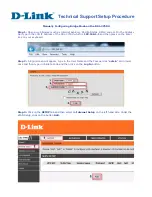
6-6
Cisco Wireless ISR and HWIC Access Point Configuration Guide
OL-6415-04
Chapter 6 Configuring Authentication Types
Understand Authentication Types
Figure 6-4
Sequence for MAC-Based Authentication
Combining MAC-Based, EAP, and Open Authentication
You can set up the access point to authenticate client devices using a combination of MAC-based and
EAP authentication. When you enable this feature, client devices that associate to the access point using
802.11 open authentication first attempt MAC authentication; if MAC authentication succeeds, the client
device joins the network. If MAC authentication fails, the access point waits for the client device to
attempt EAP authentication. See the
“Assigning Authentication Types to an SSID” section on page 6-9
for instructions on setting up this combination of authentications.
Using WPA Key Management
Wi-Fi Protected Access is a standards-based, interoperable security enhancement that strongly increases
the level of data protection and access control for existing and future wireless LAN systems. It is derived
from and will be forward-compatible with the upcoming IEEE 802.11i standard. WPA leverages
AES-CCM and TKIP (Temporal Key Integrity Protocol) for data protection and 802.1X for authenticated
key management.
WPA key management supports two mutually exclusive management types: WPA and WPA-Pre-shared
key (WPA-PSK). Using WPA key management, clients and the authentication server authenticate to each
other using an EAP authentication method, and the client and server generate a pairwise master key
(PMK). Using WPA, the server generates the PMK dynamically and passes it to the access point. Using
WPA-PSK, however, you configure a pre-shared key on both the client and the access point, and that
pre-shared key is used as the PMK.
Note
In Cisco IOS releases 12.3(4)JA and later, you cannot enable both MAC-address authentication and
WPA-PSK.
Access point
or
b
ridge
Wired LAN
Client
device
Server
1. A
u
thentic
a
tion re
qu
est
2. A
u
thentic
a
tion s
u
ccess
3. Associ
a
tion re
qu
est
4. Associ
a
tion response
(
b
lock tr
a
ffic from client)
5. A
u
thentic
a
tion re
qu
est
6. S
u
ccess
7. Access point or
b
ridge
u
n
b
locks
tr
a
ffic from client
655
8
4
Summary of Contents for HWIC
Page 8: ...Contents 8 Cisco Wireless Router and HWIC Configuration Guide OL 6415 04 ...
Page 24: ...1 6 Cisco Wireless Router and HWIC Configuration Guide OL 6415 04 Chapter 1 Overview ...
Page 181: ...Index IN 7 Cisco Wireless ISR and HWIC Access Point Configuration Guide OL 6415 04 ...
Page 182: ...Index IN 8 Cisco Wireless ISR and HWIC Access Point Configuration Guide OL 6415 04 ...
Page 183: ...Index IN 9 Cisco Wireless ISR and HWIC Access Point Configuration Guide OL 6415 04 ...
Page 184: ...Index IN 10 Cisco Wireless ISR and HWIC Access Point Configuration Guide OL 6415 04 ...
Page 185: ...Index IN 11 Cisco Wireless ISR and HWIC Access Point Configuration Guide OL 6415 04 ...
Page 186: ...Index IN 12 Cisco Wireless ISR and HWIC Access Point Configuration Guide OL 6415 04 ...
Page 187: ...Index IN 13 Cisco Wireless ISR and HWIC Access Point Configuration Guide OL 6415 04 ...
Page 188: ...Index IN 14 Cisco Wireless ISR and HWIC Access Point Configuration Guide OL 6415 04 ...
















































